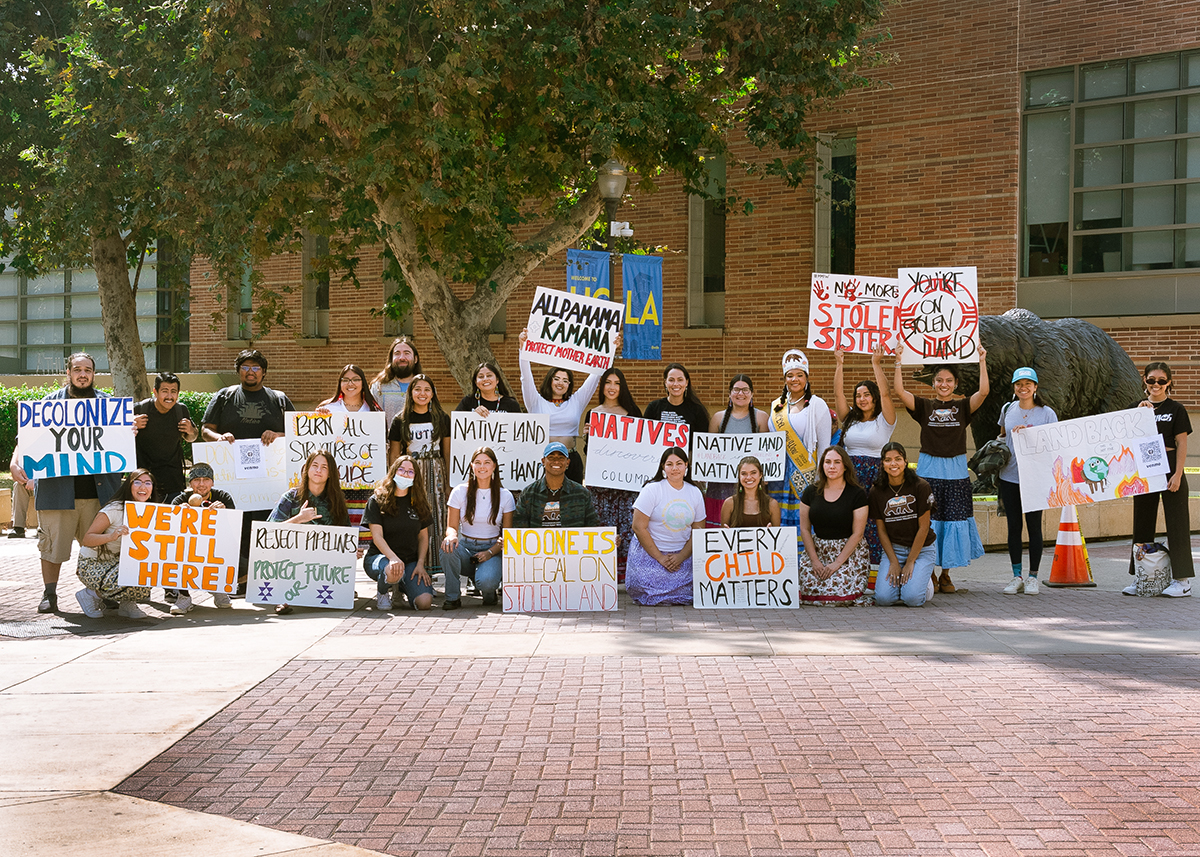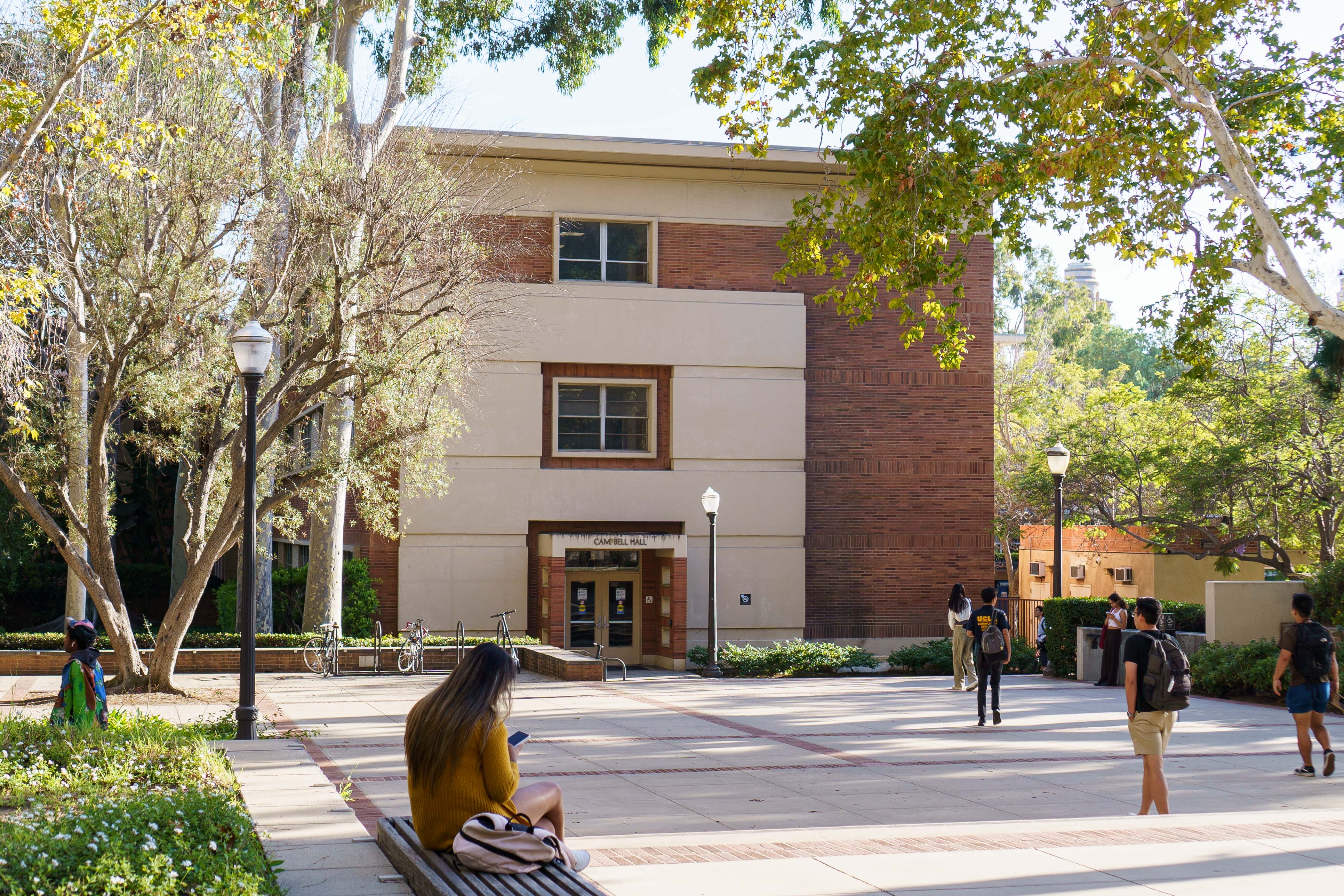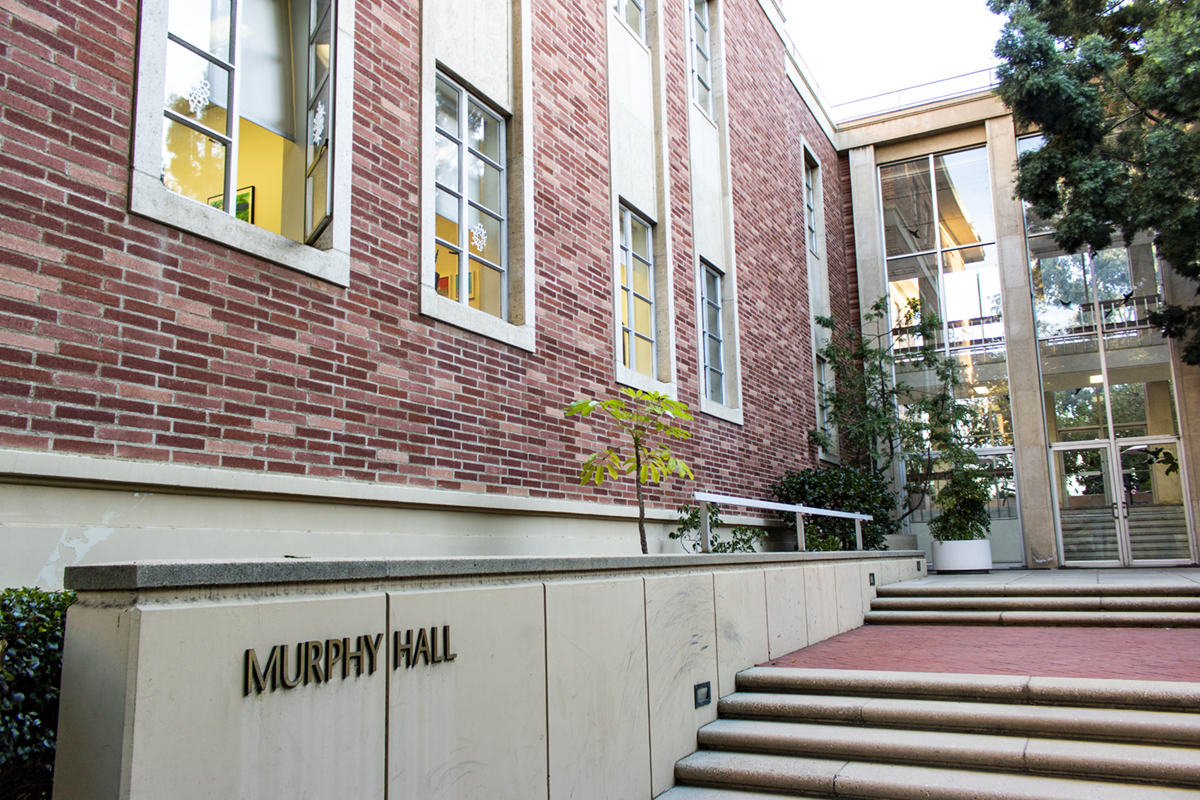Student Sean Sugai highlights oceanic Filipinx studies with individualized course
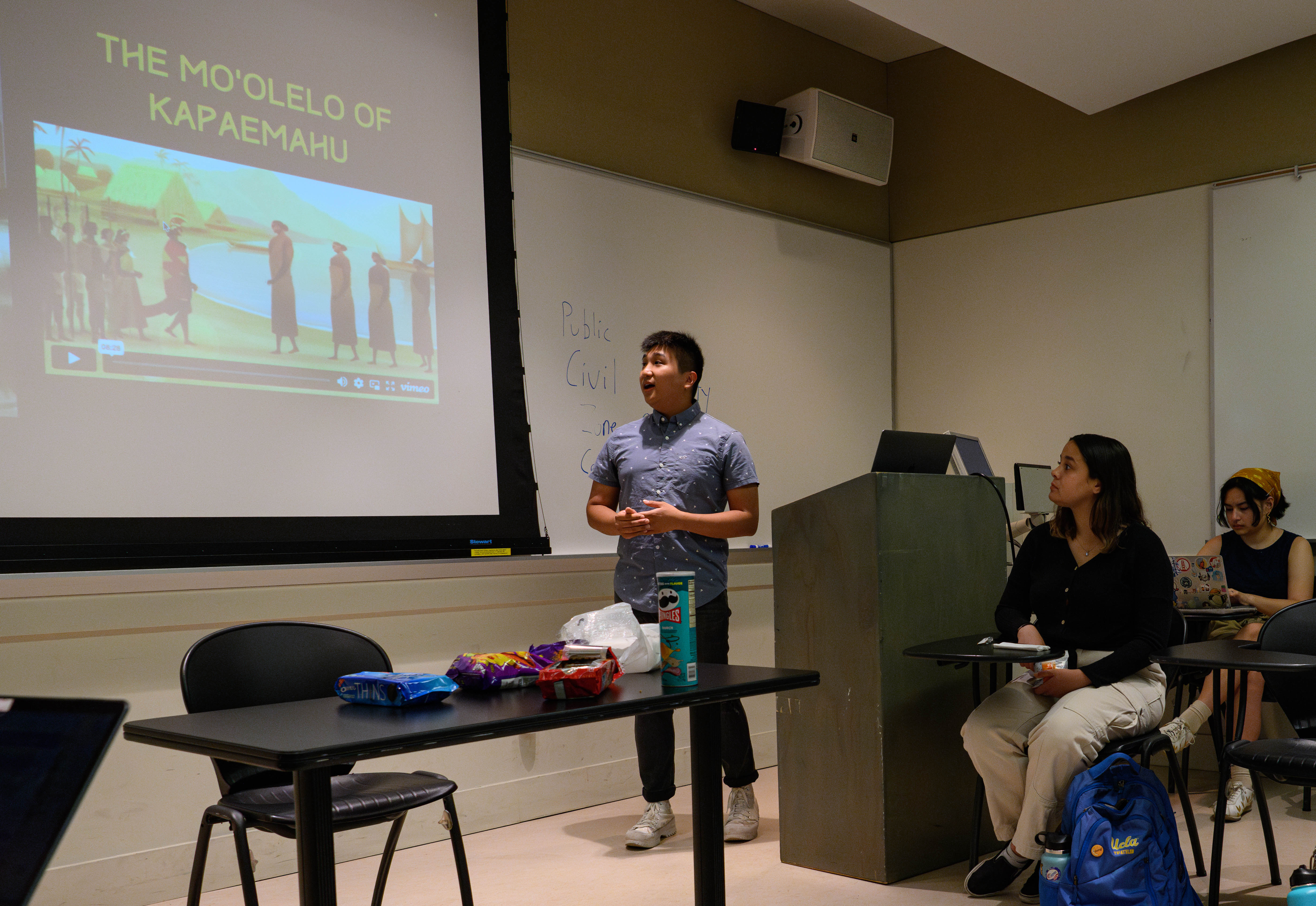
Fourth-year anthropology and human biology and society student Sean Sugai, an undergraduate instructor, teaches the university’s first oceanic Filipinx studies class. (Amelie Ionescu/Daily Bruin senior staff)
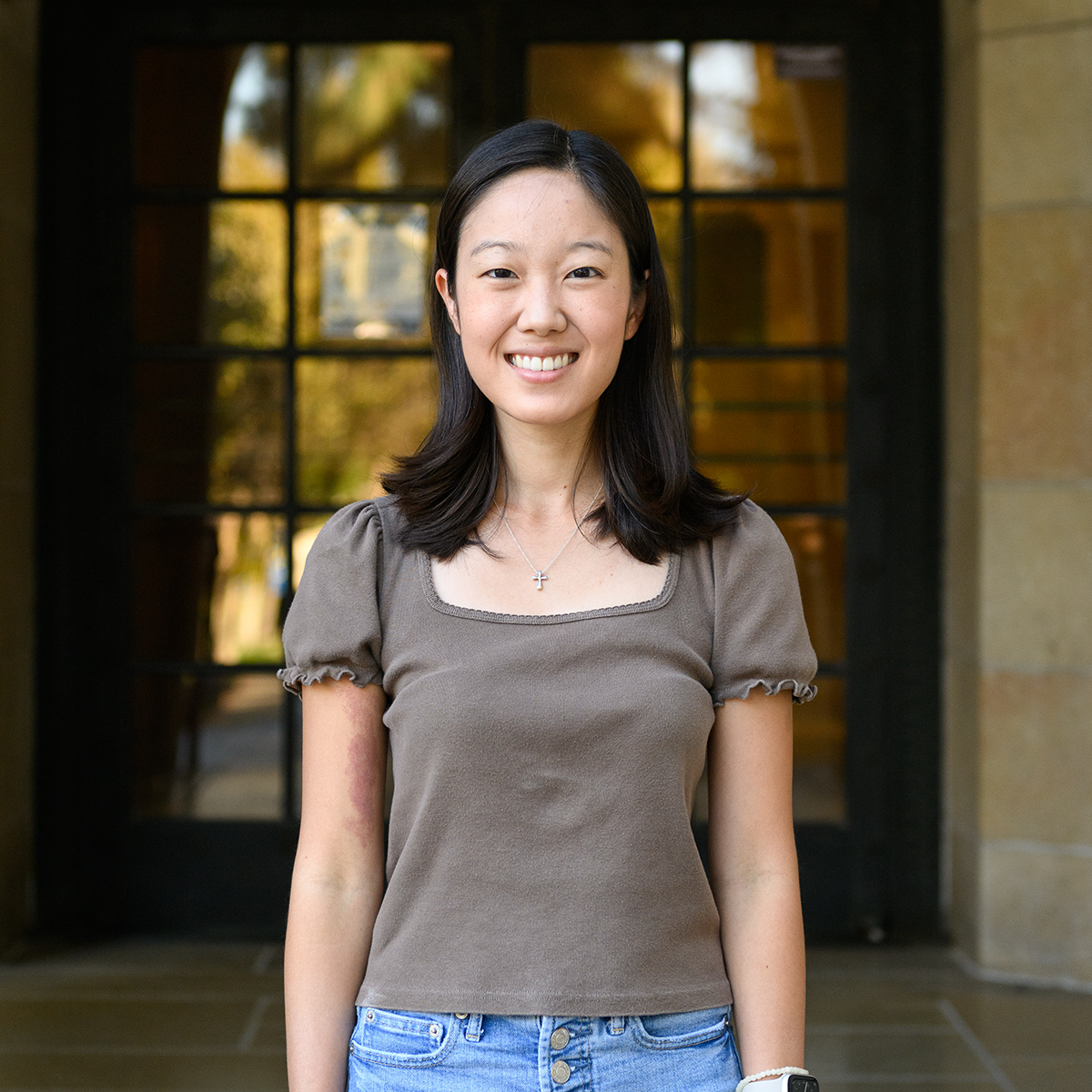
By Megan Tagami
May 25, 2023 11:30 p.m.
The inspiration for Sean Sugai’s class came from a phrase on Twitter that caught his eye.
When the fourth-year anthropology and human biology and society student saw the phrase “Oceanic Filipinx Studies,” his interest was piqued. The term came from three scholars at the University of Hawai’i and University of Minnesota, all of whom lived in Hawaii at one point in their lives and identified as Filipino – just like Sugai.
“They coined the term ‘Oceanic Filipinx Studies,’ and I was obsessed with that,” said Sugai, who was born and raised in Hawaii.
Building on these professors’ scholarship and his ongoing thesis studying Filipinos in Hawaii, Sugai developed the course Asian American Studies 88S: “Oceanic Filipinx Studies.” The one-unit class is offered through the Undergraduate Student Initiated Education program, which allows students to develop and teach their own lower-division courses to other undergraduates. Sugai’s class covers colonialism in both the Philippines and Hawaii and discusses how Filipinos, as well as other communities in Hawaii, can serve as allies to Native Hawaiians, he added.
As of 2020, Filipinos made up approximately 16% of Hawaii’s population. Sugai said he feels Filipinos’ presence in Hawaii offers important opportunities for allyship with Native Hawaiians. This includes supporting advocacy efforts on issues such as the closure of the Red Hill Bulk Fuel Storage Facility, a Navy storage facility that has leaked thousands of gallons of fuel into Oahu groundwater.
“I see that as an opportunity for Filipinos to uplift Native voices,” Sugai said. “We (Filipinos) do take up a lot of space in Hawaii, but that doesn’t mean that we can just ignore Native Hawaiians.”
Sugai also said he is excited to see how students can dispel common misconceptions around Hawaii, which, he added, is often considered a prime vacation spot without regard for Native Hawaiian history or culture. He said commercial development and tourism have obscured historical Native Hawaiian landscapes and monuments, such as a former bowling alley in Waikiki built over four stones believed to hold the healing power of past “māhū”, or individuals who had both masculine and feminine spirits and traits.
To expose students to as much Indigenous scholarship as possible, Sugai said he has prioritized including articles and videos created by Native Hawaiians throughout his class.
“People think there’s a deficit. There’s not enough Native voices,” Sugai said. “There always needs to be more, and I want to start there. But, when it comes to learning and educating, they have done the work.”
Sugai said both the Philippines and Hawaii have experienced military occupation by the United States throughout history, adding that he hopes the class can highlight shared struggles against militarism for both Filipinos and Native Hawaiians.
“Decolonization is for Indigenous people, but it doesn’t only have to be … (a) burden on Indigenous people to theorize it or to fight for it or contribute to it,” Sugai said.
For Mackenzie Fernandez, a fourth-year microbiology, immunology and molecular genetics student who identifies as Filipino, the class provides an opportunity to learn more about her cultural heritage. She said that while she has taken a Filipino language course at UCLA, her knowledge about Filipino immigration and presence in Hawaii has been limited to popular entertainment such as “Hawaii Five-0,” a television criminal drama.
“This has just been a really great class to learn a bit more about my culture,” Fernandez said.
Cheyenne Amar, a second-year physiological science student, said the class has helped her to connect to Hawaii, where she was born and spent the early years of her life. Amar said that although she moved to the mainland U.S. when she was in elementary school, she has tried to remain informed about current events in Hawaii.
She added that she appreciated the class’s discussion of the Thirty Meter Telescope, a controversial astronomy project that receives millions of dollars in funding from the UC planned to be built on Mauna Kea, which is considered sacred land to Native Hawaiians. While Amar herself has spoken out against the telescope as a member of Hui O ʻImiloa, a UCLA student organization celebrating Hawaii’s culture and history, she said the class has helped her better understand the years of advocacy that have gone into opposing the telescope’s development.
“It’s really awesome to see something that I’m passionate about also overlap with an academic setting,” Amar said. “Things like this don’t really get talked about much in university-level spaces.”
[RELATED: Hawaii Legislature passes bill to establish Mauna Kea oversight board]
Sugai said he hopes to address the misconception that there is a lack of Native Hawaiian-led advocacy and scholarship. He added that the class aims to illustrate how colonialism has erased key parts of Native Hawaiian history.
In one lecture, Sugai said he introduced the story of four Tahitian healers in Hawaii who were powerful māhū. Sugai explained how European standards for male and female binaries undermined individuals’ identities and suppressed cultural understandings of gender held by Native Hawaiians and other communities of color.
Fernandez said she enjoyed the lecture, as it helped her understand how the history of māhū in Hawaii is connected to the concept of “bakla” – a Tagalog word that refers to individuals who were assigned male at birth and have feminine mannerisms.
Amar said she is considering returning to Hawaii in the future to work as a family medicine practitioner and focus on community outreach. She added that with the knowledge she has gained from the class, she hopes to inform her future practice while also bringing greater awareness of Native Hawaiian history and advocacy to others on the mainland U.S.
“I never want to do anything to disrespect the culture or the people, and so it’s a never-ending learning process,” Amar said. “But I hope that while on the continent, I can help bring awareness because I don’t think a lot of people are aware of everything happening in Hawaii and the many struggles and injustices.”



